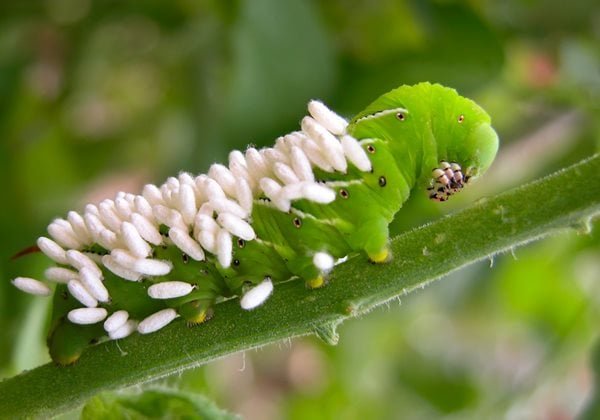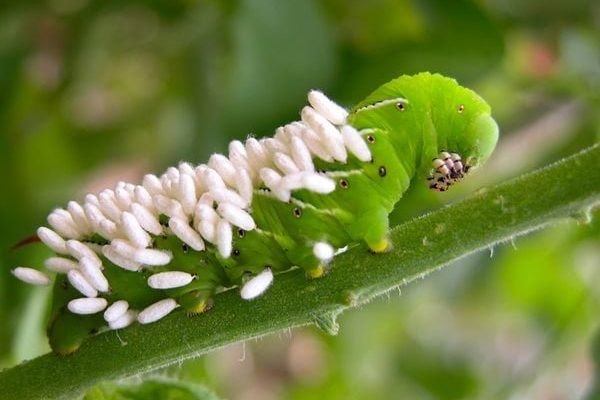
Imagine you’re sipping coffee in your backyard garden, pondering what’s munching on your precious tomato plants. You might notice some leaves looking a little worse for wear. It’s a classic case of hungry hornworms, and their eggs could be the first sign of trouble. We’ll dive into how to spot these eggs, so keep your eyes peeled and your garden safe!
Why Knowing About Hornworm Eggs Matters
You might be wondering, “Why should I care about these little eggs?” Well, for starters, hornworms can wreak havoc on your plants, especially if you’re a fan of tomatoes or peppers. These pests start their lives as tiny eggs that can quickly develop into large caterpillars, munching their way through your foliage in no time. If you catch them early, you can prevent significant damage and save your plants from an untimely demise.
Identifying hornworm eggs allows you to take action before the problem escalates. Think of it as a preventative strike in your garden warfare! By recognizing the signs early, you can take steps to manage their population, whether through organic methods or other pest control means. Knowing when and where to look is half the battle.
Appearance of Hornworm Eggs
Hornworm eggs can be quite deceptive. They are generally small, resembling little green or yellow specks. Depending on the specific species of hornworm, the eggs might be laid in clusters, typically on the undersides of leaves. They can often be mistaken for debris or other plant features, which is why careful observation is essential.
Here’s what to look for:
- Color: Most hornworm eggs are a pale green or light yellow color.
- Shape: They’re usually oval and can feel a bit soft to the touch.
- Location: Check under the leaves, where they prefer to be hidden from predators.
Spotting them can feel like finding a needle in a haystack, but once you know what to expect, you’ll become proficient at spotting these eggs in no time. It’s all about getting familiar with the visual cues.
How Hornworms Lay Eggs
Hornworms, particularly the tobacco and tomato hornworm varieties, have a life cycle that starts with these eggs. A moth lays them, often after feeding on the same plants they target later. Think of it as a boomerang effect: the moths are attracted to the plants, leading to the next generation of hornworms, which will munch their way back through the same foliage.
The female moth can lay a significant number of eggs—sometimes hundreds. They tend to cluster in small groups, making it easier for new larvae to find their food source. If an egg survives the elements or predators, it can hatch into a small caterpillar in just a few days, ready to begin its voracious appetite.
Knowing this helps you understand why quick action is necessary. One moth can lead to an invasion if those eggs go unnoticed.
Where to Look for Hornworm Eggs
While hornworm eggs can technically be laid anywhere on a plant, they have preferences that can help you focus your search. Primarily, you’ll want to inspect the underside of leaves—not just because they’re hidden there, but also because this is where young caterpillars will hatch and start feeding.
Here’s where to start:
- Tomato Plants: Common hosts for hornworms; check the leaves thoroughly.
- Pepper Plants: Like tomatoes, these are favorite dishes for moths.
- Eggplant and Tobacco: If you have these plants, they’re also prime targets!
Being methodical in your search will help. Look at several leaves, and don’t forget to check for other pests while you’re at it. This can turn into a fun little treasure hunt—just you, your garden, and the quest to save your plants!
Signs of Hornworm Infestation
Identifying **hornworm eggs** is just the first step. Once they hatch, those little green caterpillars can cause a lot of damage before you even realize they’re there. If you find holes in your leaves, it’s likely you’ve got a hornworm problem on your hands. They can eat quite a bit, making their presence known quickly.
Keep an eye out for:
- Damaged Leaves: Look for irregular holes or nibbled edges.
- Frass: This is the caterpillar droppings; it often looks like little black pellets.
- Visible Caterpillars: If you check often, you might spot them munching away!
The earlier you spot these signs, the better chance you have of controlling the infestation. Think of yourself as a detective, piecing together clues to keep your garden healthy and vibrant.
What To Do If You Find Eggs
If you do discover hornworm eggs, it’s time to take action! Here’s how to handle the situation:
- Handpicking: If the eggs are visible, you can simply remove them with your fingers or a pair of tweezers. Be sure to wear gloves if you’re sensitive!
- Insecticidal Soap: Spraying the plants with a diluted mixture can help manage any visible caterpillars while preventing new eggs from developing.
- Natural Predators: Consider introducing birds or beneficial insects like wasps that prey on hornworms.
Each of these methods has its pros and cons, but using a combination often works best. Your goal is a healthy garden, so choose what feels right for you and your plants.
Preventing Future Infestations
Once you’ve dealt with the current situation, it’s time to think about prevention. Here are some strategies to help keep your garden safe from future hornworm egg-laying moths:
- Regular Inspections: Make it a habit to check your plants weekly for eggs and larvae.
- Crop Rotation: Changing where you plant your veggies can help break the lifecycle of pests.
- Companion Planting: Some plants repel hornworms or attract their natural predators.
Creating a routine around your garden care will help you stay ahead of the game. Remember, a proactive gardener is a successful gardener!
Identifying hornworm eggs on leaves might sound tricky at first, but with a little patience and practice, you’ll find it’s not so daunting. Just think of yourself as a gardener detective, on a mission to save your plants from some sneaky pests. By learning to spot those tiny eggs, you can take charge of your garden and prevent those hornworms from wreaking havoc on your precious crops.
So, next time you’re out in the garden, look closely. You might just find those little green eggs and save your plants from a potential feast. Happy gardening!

